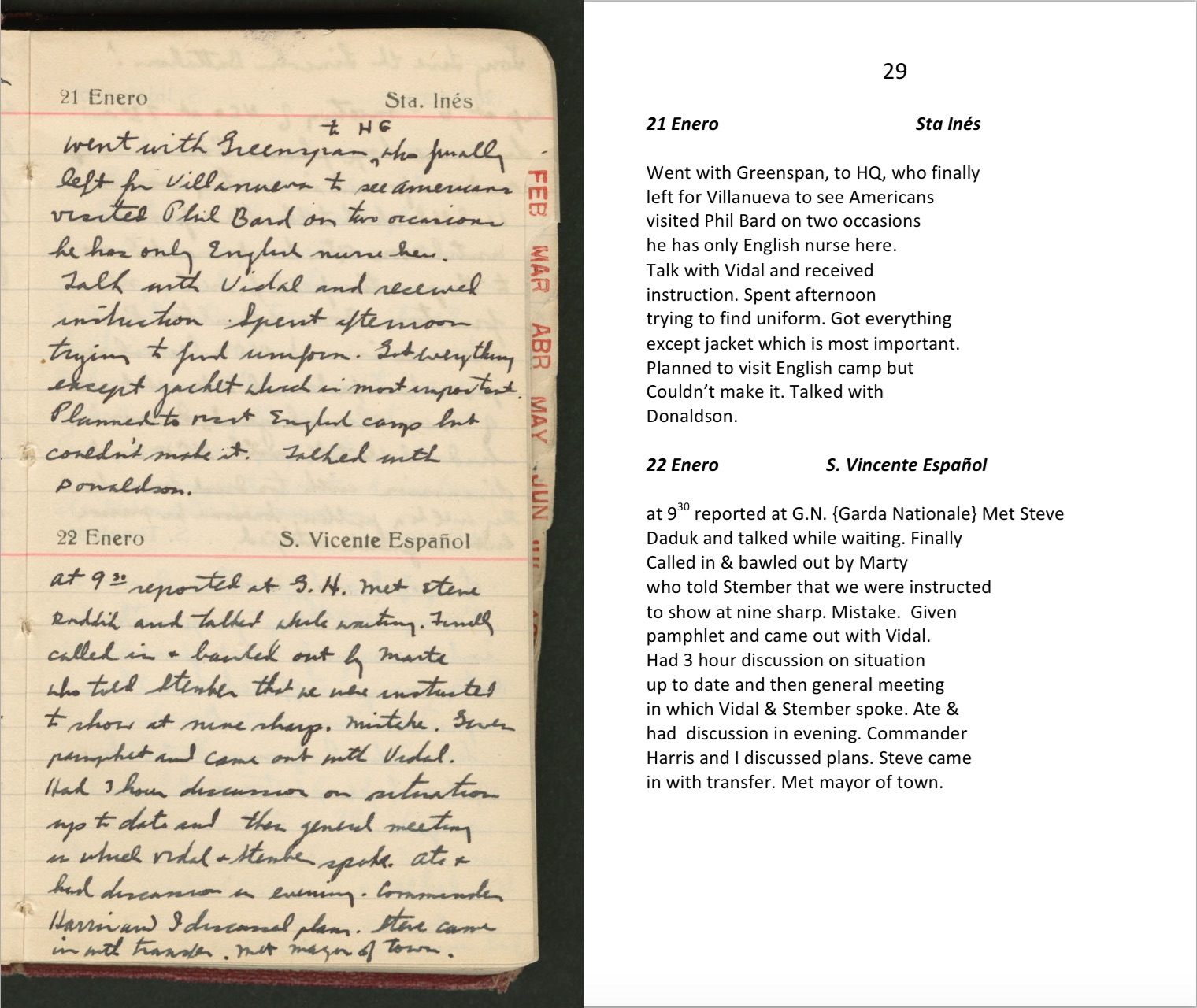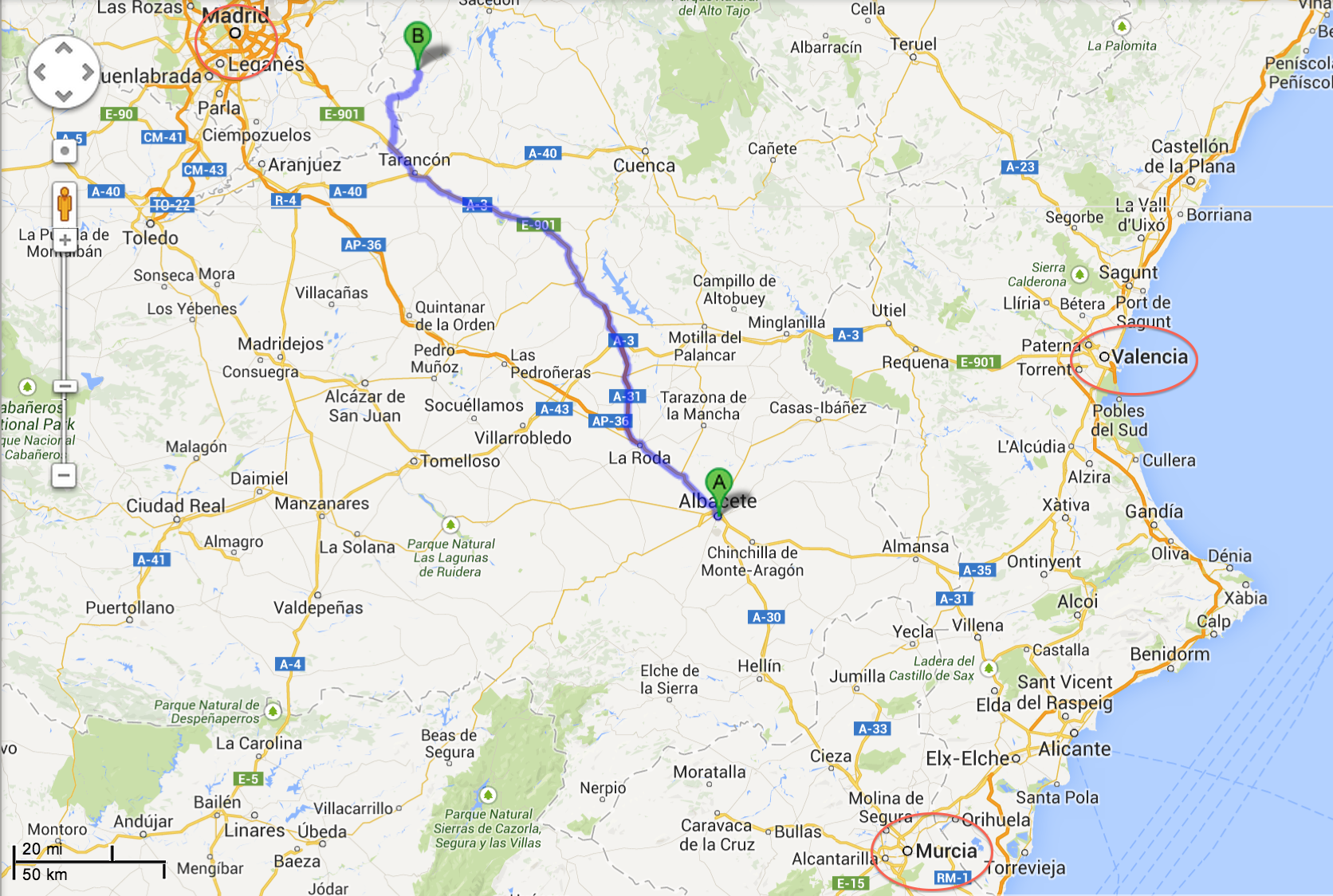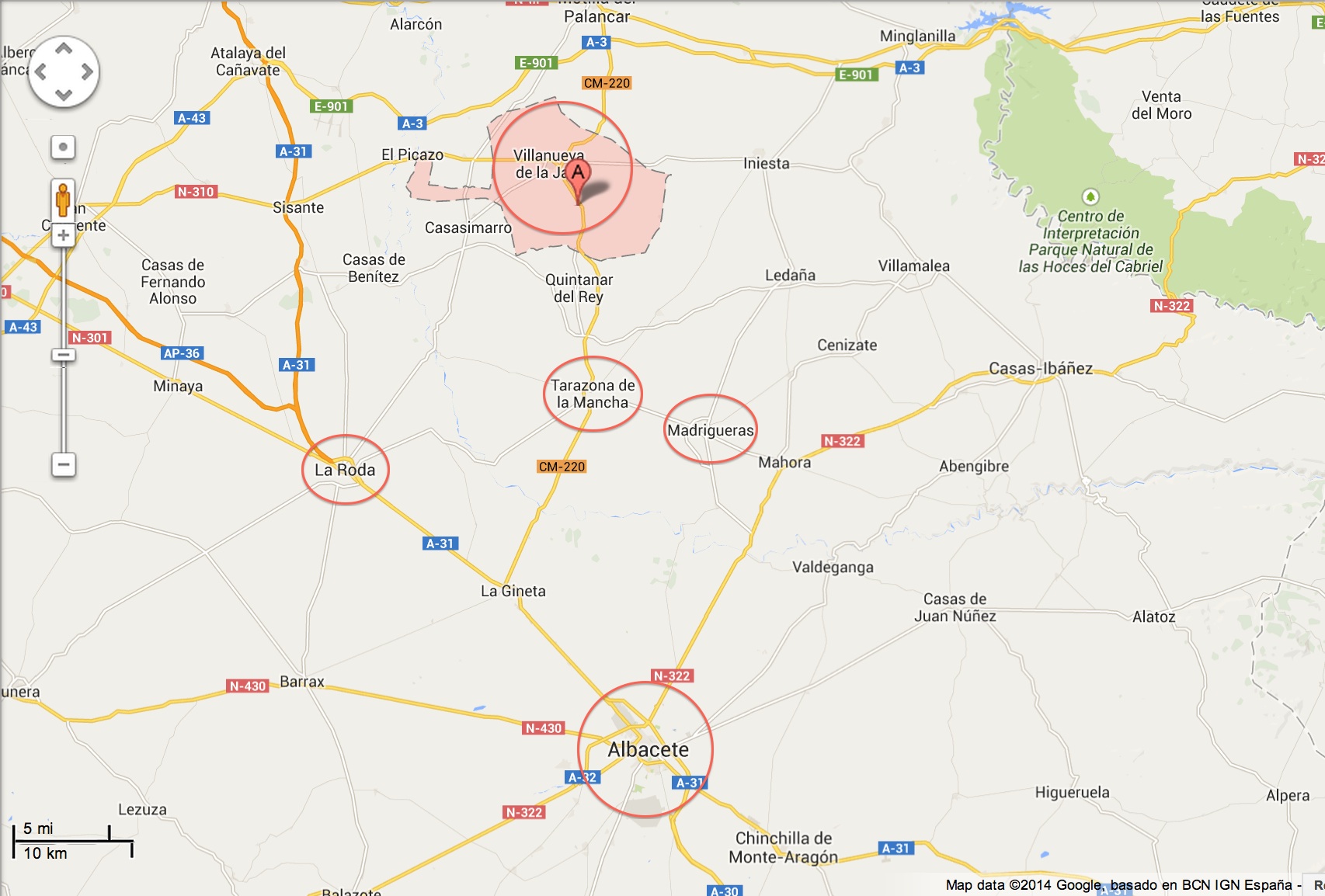
Merriman spent several days in Albacete trying to get a decision if he was in the Brigades and to which unit he would be assigned. Not all of the Brigades were at the Brigade headquarters in Albacete. A few minutes of geography might help understand some of the names in the diary. First, Albacete (A) is situated between Valencia and Madrid.

For reference, the distance between Albacete and Albares is 220 km. At a finer scale, the training of the International Brigades was done around Albacete.

Merriman is in Albacete on the 21-22nd of January but he says Alex Donaldson, who we met on the previous page, was off to Villanueva de {la} Jara which is shown on the smaller scale map to be about 30km north of Albacete and this was to become the initial training base of the Lincoln Brigade. We point out other local towns: Tarazona de la Mancha (where the IB’s trained later), Madrigueras (where the British Battalion was based) and La Roda which was a stop on the way to Madrid. Gas was often picked up at La Roda since it served all of the training bases on the way to the Front.
Merriman mentions American Phil Bard in this diary segment. The reader will note that links are being made to biographies which are on the Veterans of the Abraham Lincoln Brigade – Abraham Lincoln Brigade Archives (valb-alba.org) website. Chris Brooks, who is helping this project with identifications, has a parallel project to upgrade the biographies of the Americans who went to Spain. We hope to have photographs of all the Lincolns attached to those biographies this year. We do not have a photograph of Phil Bard at this point.
On the 21st, Merriman says that he spoke with Vidal and received his instructions. He obviously was being appointed as an officer since he was looking for a uniform and jacket. We will see that Bob Merriman felt that officers needed to look like officers. This ran at cross-currents to the “rank and file” attitudes of many of the volunteers who were in the proletariat and not in “management”. This conflict is a thread that will run through the diary and pop up frequently.
On the 22nd, Merriman says he spoke with Steve and the name is spelled Raddick. There was no Steve Roddick or Radduch or Radduck in Spain at this point but shortly we will come across Steve Daduk who became the company commander of Lincoln Company #2¹. It is believed that he is talking to Daduk. Rickard Jorgensen sent the quote from Victor (Hoar) Howard’s excellent book on the Mackenzie-Papineau (Canadian) Battalion:
“Merriman drew up a table of organization which called for two infantry companies and one machine-gun company. Commanding these were John Scott, an Englishman; Stephen Daduk, and American veteran of the air battles over Madrid the previous fall; and Douglas Seacord who was said to have been a civilian lecturer at the U.S. Military Academy at West Point.”²
Marion Merriman Wachtel repeats the bawling out by Marty in her memoir of Merriman. She said “Bob thought of Marty as a pompous little man, a martinet of the Communist party. But Bob also knew Marty was dedicated in the fight against fascism…”¹ Marty repeatedly shows up in studies of the war as an increasingly unstable master of the Brigades. Attribution of executions ordered by Marty in 1938 are still debated. Incontestable, however, are his writings in the Comintern archives about certain Lincolns that are unsympathetic at best and highly critical and derogatory at worse. Many of the requests for repatriation of Brigaders back to the US went across Marty’s desk and denials were routine.
Merriman again mentions Stember and James Harris, the Brigade Commander. We spoke of Stember on prior days and Harris will be the subject of discussion later.
————————–
¹ Merriman Wachtel and Lerude, ibid, p. 89.
² Victor Hoar ( Victor Howard in later editions) with Mac Reynolds, The Mackenzie-Papineau Battalion: Canadian Participation in the Spanish Civil War, Copp Clark Publishing, 1969.
